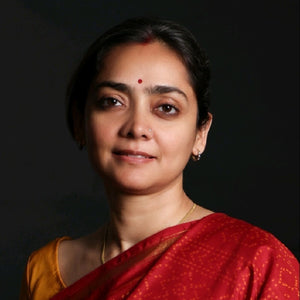Embracing India’s New Year Festivities and Cultural Traditions Across India

Get ready to mark your calendars because April is bringing us some fantastic New Year celebrations across India!
As April unfolds its beauty, India eagerly welcomes the season not just with blossoming flowers but also with vibrant New Year celebrations. While many around the world link New Year with 1st January, India paints a different picture, where from the eastern shores of West Bengal to the western lands of Gujarat, each region paints a unique picture of celebration, reflecting its history, beliefs, and customs.
In this journey, we'll explore how different parts of India celebrate the New Year. Join us as we discover the unique customs and traditions that make these celebrations special and joyful.
How do people celebrate the new year in different states of India?
New Year Festivities in West India

Photo: Gudi Padwa; Photo Credit: Freepik
In Gujarat, the New Year coincides with Chaitra Navratri, scheduled to commence on 9th April, this year. It's nine days of energetic celebrations with music, dance, and devotion. People dance the Garba and Dandiya Raas to honor Goddess Durga.
New Year Festivities in North India
In the northern part of India, New Year is celebrated in different ways too. In Punjab, they celebrate Vaisakhi, which is the Sikh New Year marking the establishment of the Khalsa Panth by Guru Gobind Singh Ji in 1699. The festival is celebrated on the 13th or 14th of April. The festivities include Nagar Kirtans, where devotees participate in processions singing hymns and performing martial arts displays. What makes Vaisakhi special is its emphasis on community service and the spirit of selflessness, as Sikhs engage in seva (volunteer work) and charitable acts to help those in need.
In Uttarakhand, they celebrate Navreh or Navratras. It's the start of the Hindu lunar calendar and is scheduled to commence on 9th April this year.
New Year Festivities in South India
Heading to the south, the New Year celebrations are vibrant and colorful. Ugadi is the New Year festival celebrated in the states of Andhra Pradesh, Telangana, and Karnataka. It marks the beginning of the Hindu lunar calendar (9th April, this year) and is associated with the onset of spring. The day begins with the ritualistic consumption of neem leaves, jaggery, and raw mangoes, symbolizing the bitter, sweet, and tangy flavors of life. People clean their homes, wear new clothes, and offer prayers for a fruitful year ahead.

Photo:Ugadi; Photo Credit: Freepik
In Tamil Nadu, they celebrate Puthandu. It falls on or about 14 April every year. People draw beautiful designs outside their homes and eat special foods. They visit temples and exchange gifts with loved ones.
In Kerala, Vishu is celebrated as the Malayalam New Year which falls on 14th on 15th April. The highlight is the 'Vishukkani,' an auspicious arrangement of items seen first thing in the morning for prosperity. Families meticulously arrange an assortment of auspicious items such as rice, fruits, vegetables, flowers, gold, coins, and a sacred text or idol of Lord Krishna, ensuring prosperity and abundance in the coming year.
New Year Festivities in East India
In eastern India, New Year celebrations are full of colors and traditions. In West Bengal, people celebrate Poila Boishakh, the first day of the Bengali calendar which usually falls either on the 14th or 15th of April. In West Bengal, during Poila Boishakh, businesses observe a unique tradition called "Haal Khata." This tradition involves opening a new ledger book, symbolizing the start of a fresh financial year. It's considered auspicious and is accompanied by rituals seeking prosperity. Haal Khata also strengthens community bonds as business owners invite customers and associates to participate, fostering mutual trust and gratitude. They have processions with music and sweets, and families gather for prayers and delicious food.
In Odisha, the New Year is called Pana Sankranti or Maha Vishuba Sankranti, celebrated to honor the Sun God. It falls on 13/14 April every year. The special drink called Pana, made from water, milk, jaggery, and fruits, is offered to the deity and distributed among devotees as Prasad.
In each part of India, the New Year festival is a symbol of renewal and rejuvenation, as people cleanse their minds and hearts of negativity and embark on a fresh journey filled with hope and positivity. It's a time to celebrate with family and friends, enjoy delicious food, and embrace the rich traditions of our culture. As we embark on this fresh journey, let's cherish the happiness and togetherness that the New Year brings, and look forward to a year filled with prosperity and joy.









 https://eyaas.in/
https://eyaas.in/





Leave a comment
Please note, comments need to be approved before they are published.